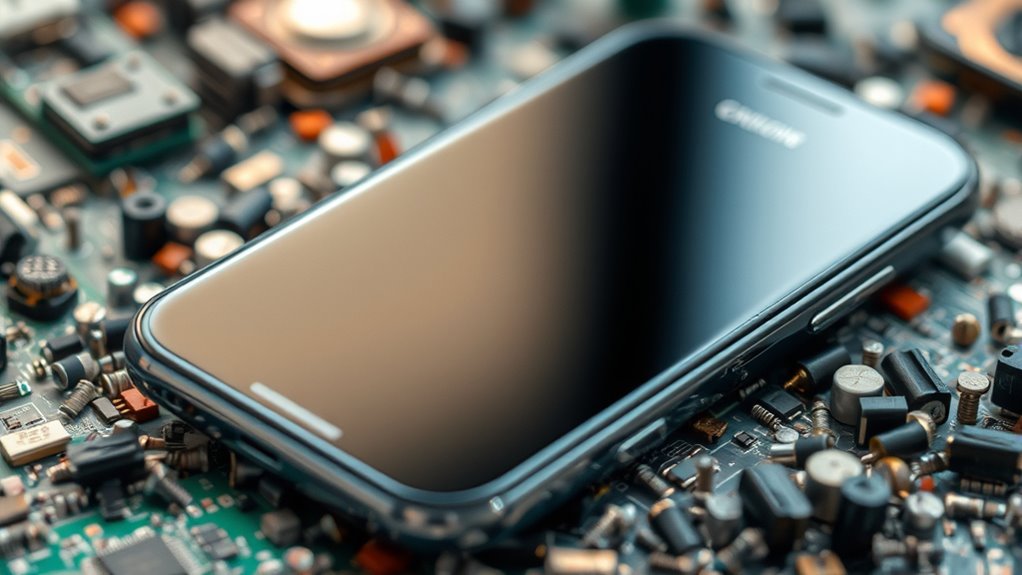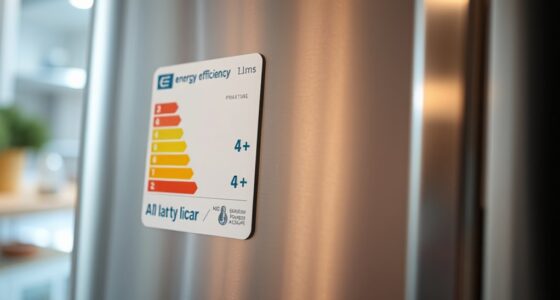Refurbished tech can be a hidden gem if you buy from reputable sellers that offer warranties and transparent testing. It’s eco-friendly, reducing electronic waste and conserving resources. But beware of untrustworthy vendors with limited warranties or minimal checks, which can lead to costly issues down the line. To avoid surprises, focus on quality assurance, reviews, and clear support policies. Curious how to spot the best options? Continue exploring to uncover more tips.
Key Takeaways
- Refurbished tech can offer significant savings and environmental benefits if purchased from reputable sellers.
- Proper warranties and thorough testing ensure quality, reducing the risk of hidden defects.
- Buying from trusted vendors with transparent refurbishment processes minimizes the chances of costly surprises.
- Limited or unclear warranty coverage may lead to unexpected expenses if issues arise post-purchase.
- Research and reviews are vital to distinguish between hidden gems and potential costly mistakes.

Are refurbished tech devices worth considering? It’s a question many consumers ask, especially when weighing potential savings against possible risks. Refurbished gadgets often come with seller warranties, which can provide some peace of mind, but it’s essential to understand what those warranties cover. Reputable sellers usually offer warranties that last from 90 days to a year, protecting you against defects and ensuring the device functions as promised. This added security makes buying refurbished less risky than it might seem at first glance. Plus, these warranties often include technical support, so if something goes wrong, you can get it fixed without paying full retail prices.
Beyond the warranty, one of the biggest benefits of buying refurbished tech is its positive environmental impact. When you choose a refurbished device, you’re helping reduce electronic waste and lessen the demand for new manufacturing. Manufacturing new gadgets consumes significant resources—minerals, water, and energy—and generates pollution. By extending the life of existing devices, you’re actively participating in a more sustainable cycle. This not only conserves natural resources but also decreases the carbon footprint associated with producing brand-new electronics. Refurbished devices are typically tested, repaired, and cleaned thoroughly before resale, ensuring they’re functional and reliable. Choosing refurbished tech is, in many ways, a conscious decision to support environmental preservation.
However, it’s not all perfect. You need to be cautious about where you buy your refurbished device. Some sellers might cut corners, offering devices with minimal testing or inadequate warranties, which can lead to unexpected problems down the line. Always look for reputable vendors that provide clear warranty policies, transparent refurbishment processes, and good customer reviews. Doing so assures you’re purchasing from someone who values quality and customer satisfaction. Additionally, check what’s covered under the seller warranties—some might exclude certain components or limit the duration of coverage. Knowing these details helps you avoid surprises if the device develops issues shortly after purchase.
Frequently Asked Questions
How Long Do Refurbished Devices Typically Last?
Refurbished devices usually last about the same as new ones, typically 3 to 5 years, depending on usage. You might experience varying device longevity, but proper care can extend this. Keep in mind, repair frequency could increase over time, especially if the device is older or heavily used. Regular updates and gentle handling help minimize repair needs, ensuring your refurbished device stays reliable longer and provides good value.
Are Refurbished Gadgets Covered by Warranty?
Think of warranty coverage as a safety net for your tech investments; it’s reassuring when you know your refurbished gadgets are protected. Usually, refurbished devices come with warranties ranging from 90 days to a year, helping extend device longevity. Before buying, check the warranty details to understand what’s covered and for how long. This way, you can enjoy your tech without worries, knowing support is just a call away if issues arise.
Can Refurbished Tech Be Upgraded Like New?
You can often upgrade refurbished tech, but it depends on the device and its components. Many models allow upgrade options like adding more RAM or storage, but some may be restricted to factory settings, especially if they’ve been reset or refurbished to original specs. Check the device’s compatibility and warranty terms before upgrading, so you guarantee it’s safe and worth the effort.
What Are the Signs of a Poor-Quality Refurb?
So, you’re hunting for signs of a poor-quality refurb? Watch for cosmetic defects that scream “I’ve seen better days,” or lack of proper refurbished certification—like a badge of honor for quality. If the device feels sluggish or the warranty’s sketchy, you’re likely dealing with a botched job. A shady refurb often skips the details, making you wonder if you’re buying a gem or just a bargain basement disaster.
Is There a Significant Performance Difference?
You might notice a slight performance gap when comparing refurbished tech to new devices, but it often isn’t significant for everyday use. However, reliability concerns can arise if the refurb isn’t properly tested or certified. While some refurbished gadgets perform almost like new, others might experience issues sooner. To minimize risks, choose reputable sellers and check warranties, ensuring your device meets your expectations without unexpected performance hiccups.
Conclusion
Think refurbished tech is a risky gamble? Think again. With certified warranties, thorough testing, and significant savings, you’re actually getting great value without sacrificing quality. Don’t let fears of hidden flaws hold you back—trusted sellers prioritize transparency and reliability. So, next time you’re tempted by new gadgets, consider a refurbished option. It’s a smart, eco-friendly choice that could give you top-tier tech at a fraction of the price. Why pay more when you can get just as much?









